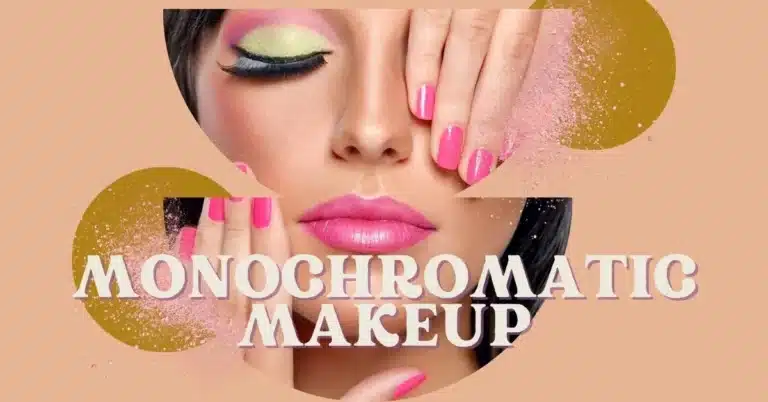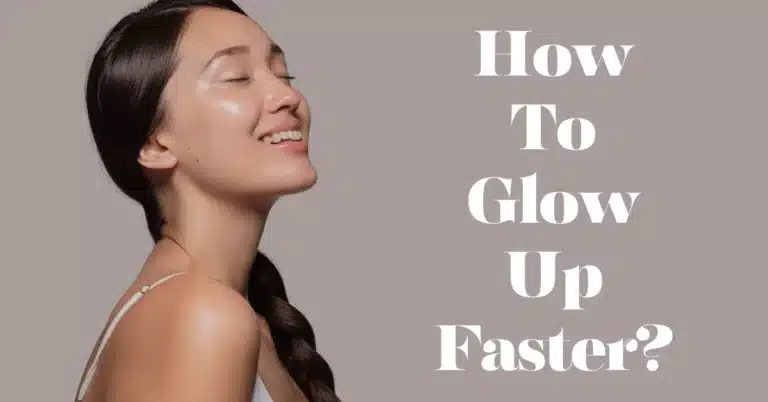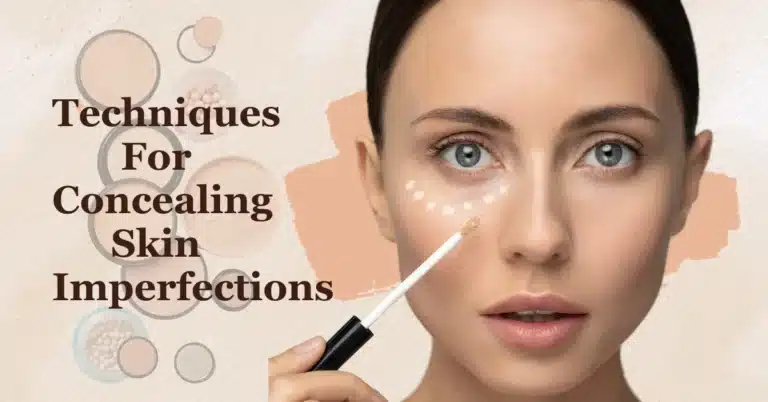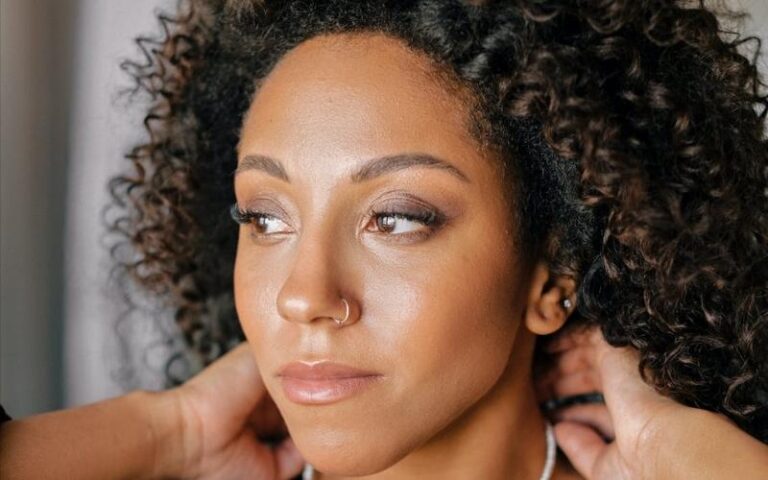15 Tips And Techniques For Camera-Ready Makeup

In an era where digital photos are just a click away, understanding the nuances of camera-ready makeup is crucial. But what does “camera-ready makeup” mean? Essentially, it’s about ensuring your makeup looks as flawless on camera as it does in person. Whether you’re preparing for a photoshoot, a special event, or just wanting that Instagram-worthy selfie, these tips and techniques will help you master the art.
1. Prep the Canvas
Before applying any makeup, it’s vital to start with a fresh, clean face. Remove any impurities using a gentle cleanser. Follow this up with a moisturizer suitable for your skin type. Hydrated skin allows makeup to adhere better, preventing it from settling into fine lines or looking cakey.
2. Primer is Your Best Friend
Think of a primer as the base layer that holds everything together. It fills in pores, smoothens the skin’s texture, and provides a barrier, ensuring the longevity of your makeup. There are also primers specifically designed to address certain concerns like redness or dullness.
3. Foundation Matters
A foundation sets the tone for your makeup. With the advances in cosmetic technology, we now have foundations that cater to the requirements of high-definition cameras. These products offer seamless coverage without looking heavy, ensuring you look flawless both on and off-camera.
4. Beware of SPF Flashback
While SPF is essential for protecting the skin, certain ingredients can cause a ghostly white reflection when photographed with a flash. Before a big event, it’s worthwhile to take a test photo to ensure your foundation doesn’t create this unwanted effect.
5. Go Matte
Cameras, especially with flash, can exaggerate even the slightest shine, making your face appear oily. Matte products, especially powders, help in controlling shine and ensuring a polished look in photos.
6. Define Your Brows
Brows frame the face and can dramatically impact your overall look. Cameras can sometimes diminish the appearance of softer colors, so enhancing your brows ensures they stand out. Use a brow pencil or powder to fill gaps, but strive for a natural finish.
7. Eye Drama
The eyes are often the focal point in photos. Using neutral shades can help contour and define the eye area. A touch of shimmer can brighten up the eyes, but it’s essential to use it strategically to avoid excessive shine.
8. Mascara and Lashes
Mascara can help elongate and volumize lashes, ensuring they stand out in photos. For added drama, consider using false lashes. They come in various styles, so you can choose one that complements your look.
9. Contour and Highlight
The flash from cameras can flatten facial features. By contouring, you’re creating shadows, and by highlighting, you’re accentuating certain features. This play of light and dark restores depth and dimension to your face.
10. Bold Lips
A statement lip can elevate your entire look. It’s important to ensure clean, precise lines for a polished appearance. A lip liner can help define the lips and prevent lip colors from bleeding.
11. Color Correct
Cameras have a knack for highlighting skin imperfections. Color-correcting concealers neutralize specific concerns – peach or orange counters dark circles, green neutralizes redness, and purple combats dullness.
12. Blush It Up
Blush imparts a healthy glow to the face. However, cameras can sometimes wash out color, making you appear pale. It’s essential to apply a touch more blush than usual, ensuring you look radiant and not washed out.
13. Set It All
After all your efforts, you’d want your makeup to stay put. A setting spray acts as a protective barrier, preventing makeup from smudging, settling, or fading.
14. Keep It Natural
While it’s essential to define and accentuate, overdoing can make you look overworked in photos. The aim should always be enhancement, not a mask. This ensures you look naturally beautiful and not overly done.
15. Tools Matter
Good quality brushes and sponges ensure even application and better blending. Well-blended makeup eliminates visible lines and ensures a seamless transition between products, giving a more professional finish.
While these tips help in achieving a camera-ready face, it’s always the confidence and smile that truly make any photo shine!
Buy Camera Ready Makeup Kit
A “Camera Ready Makeup Kit” refers to a curated set of makeup products specifically designed to ensure that the wearer looks flawless and impeccable in photographs and on camera. Given the nuances of photography and the way cameras can pick up on certain makeup textures or colors differently than the naked eye, a camera-ready kit emphasizes products that counteract these challenges. Here’s a brief overview:
Components of a Camera Ready Makeup Kit:
- Foundation: This should be high-definition and closely match the user’s skin tone. It’s meant to provide a smooth base, hiding imperfections without looking heavy or cakey.
- Concealers: These are used for spot treatments and to cover blemishes or under-eye circles. They might also include color-correcting options.
- Matte Powders: Help set the foundation and concealer, reducing shine, which can be exaggerated by camera flashes.
- Blush, Bronzer, and Highlight: These are used to define and enhance the face’s structure, ensuring features don’t appear flat on camera.
- Eye Makeup: Includes eyeshadows (primarily matte or satin finishes), eyeliners, and mascaras. The aim is to define the eyes without overdoing shimmer, which can reflect too much light.
- Brow Products: These can range from pencils to powders to gels. Defined brows frame the face and ensure it doesn’t look washed out in photos.
- Lip Products: Depending on the kit, this can include lip liners, lipsticks, and glosses in various shades. These should be long-lasting to reduce the need for frequent touch-ups.
- Setting Sprays: These are essential to keep the makeup in place, ensuring longevity and reducing the need for touch-ups.
- Tools: Good quality brushes, sponges, and perhaps even a few cotton buds and tissues for any minor corrections.
- Extras: Some kits might also include items like primer (to ensure makeup adheres well to the skin), blotting papers (to remove excess oil without disturbing makeup), and perhaps even a compact mirror for on-the-go checks.
Many brands offer 4 in 1 products that act as a foundation, concealer, powder, and sunscreen. Check beauty retailers, department stores, or online shops. Always read reviews and maybe even samples before purchasing.
The key to a “Camera Ready Makeup Kit” is its emphasis on longevity, the avoidance of flashbacks, and products that enhance without overexaggerating features. This ensures that whether you’re in front of a professional camera, taking a selfie, or on a video call, your makeup looks impeccable.
Bonus Pro-Tip
One of the cornerstones of both photography and makeup is the profound understanding of lighting. Much like an outfit can take on different appearances in varied settings, makeup can similarly shift in appearance under diverse light sources. This intricate relationship between light and cosmetics underscores the emphasis both makeup artists and photographers place on lighting nuances.
Indeed, while adept makeup application and the right products are pivotal, truly grasping and adjusting to lighting conditions is key to capturing that impeccable image. When makeup and light converge harmoniously, the outcome is invariably stunning visuals.
FAQs
Q: What is camera-ready makeup?
A: Camera-ready makeup refers to techniques and products designed to ensure that individuals look flawless and impeccable in photographs and on camera. Given the specific challenges of photography, such as lighting and resolution, camera-ready makeup emphasizes products that counteract these challenges for a picture-perfect look.
Q: Why is understanding lighting important for camera-ready makeup?
A: Lighting plays a pivotal role in how makeup appears in photos. Different light sources, from natural to artificial, can affect the appearance, shade, and texture of makeup. Understanding these nuances ensures that makeup looks consistent and flawless, regardless of the lighting conditions.
Q: How does camera-ready makeup differ from everyday makeup?
A: While everyday makeup focuses on enhancing features for a natural look in person, camera-ready makeup is tailored to look impeccable on screen. This might mean using more matte products to reduce shine, defining features more prominently, and ensuring longevity to minimize the need for touch-ups.
Q: Why is primer considered essential for camera-ready makeup?
A: Primer acts as a base layer, ensuring makeup adheres well to the skin, lasts longer, and appears smoother. Especially for photos, a primer can fill in pores and fine lines, providing a seamless canvas that prevents makeup from looking cakey or settling into imperfections.
Q: What is the significance of matte products in camera-ready makeup?
A: Matte products help control shine, which cameras, especially with flash, can exaggerate. Using matte foundations, powders, and eyeshadows ensures the face doesn’t appear overly oily or reflective in photographs.
Q: How can one avoid the dreaded SPF flashback in photos?
A: While essential for skin protection, SPF can cause a white cast in photos when using flash. To avoid this, opt for makeup products without SPF or those with photo-friendly formulations. Taking a test photo with a flash before the event can also help check for any flashbacks.
Q: Why is contouring and highlighting important for camera-ready looks?
A: Cameras can flatten facial features. Contouring and highlighting reintroduce depth and dimension by playing with shadows (contour) and highlights, ensuring that the face retains its structure and definition in photographs.
Q: How can one ensure their makeup remains camera-ready throughout the day?
A: Setting sprays and powders can be instrumental in maintaining the makeup’s longevity. They act as barriers, preventing makeup from smudging, settling, or fading, ensuring a camera-ready face for longer durations.
Q: What is the role of tools in achieving a camera-ready look?
A: High-quality brushes and sponges ensure even application and superior blending. Well-blended makeup ensures a more professional finish, free from visible lines and imperfections, making it more suitable for photography.
Q: Is camera-ready makeup suitable for everyday wear?
A: While camera-ready makeup is designed for optimal appearance in photographs, many techniques and products can be adapted for everyday wear, especially if one desires a more polished and defined look.
References
https://m3makeup.com/expert-tips-for-camera-ready-makeup/
https://www.byrdie.com/makeup-for-photo-5195367
https://www.lorealparisusa.com/beauty-magazine/beauty-tips/beauty-looks/camera-and-photo-makeup
https://gabrielcosmeticsinc.com/blogs/news/how-to-do-camera-ready-makeup





